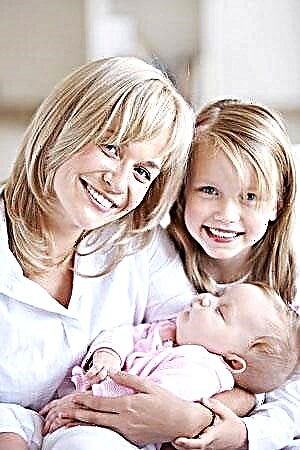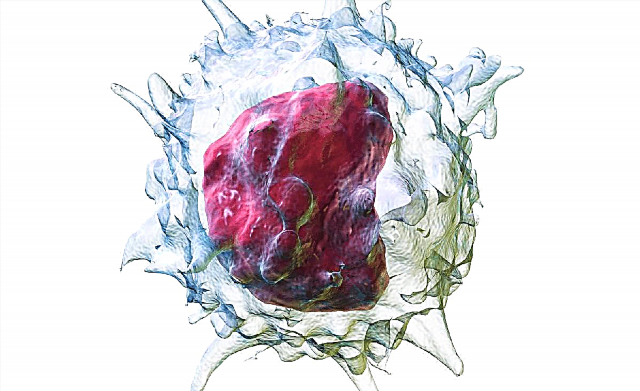Traditionally, in the autumn-spring period, a peak in the incidence of viral-respiratory pathologies is recorded. Young children are most susceptible to such diseases. Therefore, it is not surprising that most of them get a runny nose. It is not at all necessary to immediately run to pharmacies and buy expensive medicines. First you need to try a simple and proven remedy for years - rinsing the nasal cavity with a hypertonic salt solution.

Every mom should know how to wash her baby's nose
It is necessary to rinse the nasal passages not only in the presence of any pathologies, but also as hygienic considerations. Dry air negatively affects the structure of the mucous membrane, reduces its immune resistance. Therefore, to moisturize and clean it, it is periodically necessary to rinse the nasal passages. Not everyone knows how to properly rinse a child's nose.
Additional Information. Irrigating and rinsing the nasal cavity is a great way to wean your toddler from nose-picking. In most cases, children do this not out of harm, but in order to clear the nose of crusts and mucus, which prevents them from breathing normally. This bad habit is common not only for children, but also for many teenagers. Meanwhile, picking your nose is indecent and dangerous enough for your health.
How to clear a baby's nose
Many parents may be interested in how best to rinse the baby's nose, because it is somewhat more difficult to do this than for an older child, who can already be explained that it will be necessary to suffer a little.
To rinse the nose, you will need a pipette, a small rubber bulb, rinsing fluid, cotton balls, and vaseline oil. The procedure for flushing the nasal passages in infants is as follows:
- mucous discharge is removed from the nasal passages (for this you can use a syringe with a volume of up to 50 ml);
- the child is laid to one side;
- 5-10 ml of a solution for rinsing the nose is taken into a pipette;
- the solution is injected into one nostril, then the child is turned over on the other side and the rest of the medicine is instilled into the other nasal passage.
Council. During the procedure, you need to constantly monitor the position of the baby's head. It should be turned on its side and tilted slightly forward. If the solution gets into the child's throat, it must be turned on its stomach and lightly tapped on the back. The medicine must be drained into the nasal passages slowly, without pressure, otherwise the solution can enter the ears and cause inflammatory reactions.

How to rinse a child's nose, the pediatrician knows
Why wash your baby's nose
Every caring mother is simply obliged to know how to rinse the child's nose, because this is one of the most effective ways to rid the baby of the mucus accumulated in the nasopharynx. It should also be noted that this treatment option is completely harmless and cannot cause any harm to the little one. Therefore, in case of a cold, doctors recommend frequent washing, because this way you can clear the nasal passages and help the mucous membrane do its job perfectly.
With nasal congestion, a number of problems arise for the baby:
- sleep disorder;
- decreased activity and attention;
- loss of appetite;
- slowdown in development;
- suspension of growth;
- visual impairment;
- dysfunction of the nervous system;
- headaches;
- the formation of an incorrect bite;
- speech disorder;
- an increase in adenoid tissue;
- memory problems;
- manifestation of allergic diseases;
- pathology of the respiratory system.
Many symptoms can also occur in adults due to poor nasal breathing. It is easier to prevent or alleviate the disease without the use of medication. Therefore, every mother should know how to rinse a baby's nose.

To moisturize the nasal passages in a newborn, 1-2 drops of saline are enough
Council. To exclude the presence of complications in a child, you should visit an otolaryngologist.
Precautionary measures
To achieve the maximum effect of rinsing the nose, you should follow some simple rules:
- the solution for washing into the nasal cavity should fall by gravity, when using a syringe, syringe - under minimal pressure;
- the baby's head should be tilted forward and 45 ° to the side;
- the optimum temperature of the solution for cleaning is 35-37 ° C.
How often is the procedure performed
Pediatricians recommend one-year-old babies to wash their nose 3-4 times a day. In the process of performing the procedure, you must adhere to the established concentration of the active substance in the solution. For children, it is better to buy ready-made solutions. For babies - use specialized medicines for instillation. In case of severe edema of the mucous membrane, vasoconstrictor drops should be instilled before the procedure.
At what age to carry out the procedure
You can wash your baby's nose a few weeks after birth. Due to the anatomical and morphological features of development, the procedure for children under one year old and for older ones is very different. For an infant, nasal lavage is performed only for medical reasons.
Note. With the correct execution of the procedure, according to the recommendations of a pediatrician, the likelihood of complications is minimized.

The procedure for rinsing the nose is somewhat simplified if the child confidently holds his head and stands on his feet
How to properly rinse a baby's nose
Monthly babies have very narrow nasal passages, and the importance of rinsing the nose cannot be explained to them. All this significantly complicates the procedure. Babies under 12 months old need to clean their nasal passages daily. The procedure for rinsing the nose in infants up to a year is as follows:
- Mucus is removed from the nose; for this it is better to use an aspirator.
- The solution is drawn into a pipette.
- The child is laid on a flat surface.
- The head is turned to one side.
- A few drops of pharmacy medicine are injected into the upper nostril.
- The child is lifted in his arms, thus facilitating the release of fluid from the nose.
- Similar procedures are carried out after the baby is placed on the opposite side.
What products to use for rinsing
It is better to wash the nose in children before going to kindergarten or school in winter. In addition, the procedure must be repeated upon returning home from crowded places. Pharmaceutical preparations and traditional medicine can be used to cleanse the nasal passages from snot.
Medication for washing
Saline is an affordable, cheap drug. A sterile solution can be purchased at a pharmacy. Available in bottles of 100, 200 and 500 ml. Absolutely safe to use. For the prevention and treatment of rhinitis with acute respiratory infections, rinsing the nose with saline is very effective. To clean the nose of a newborn, drop one drop into each nostril with a pipette (up to 5 times a day). A newborn cannot independently rinse a nose from a pear or syringe. This can cause otitis media.
Saline can be prepared even at home. To do this, you will need 1 teaspoon of kitchen salt (it is better to use purified salt) and 1 liter of boiled water. The solution can be used both for irrigation and for rinsing the nose.
Sea salt is a good remedy for rinsing the nasal passages. It is best to use iodized salt as it has the best antiseptic and anti-inflammatory properties. One teaspoon of salt is added to 1 liter of warm boiled water. When the solution reaches a comfortable temperature, it can be used as directed.
The modern pharmaceutical market offers the buyer a wide selection of medicines that can be used both to clear the nasal passages from mucus and to treat a cold. Most often, the following drugs are prescribed for washing the nasal passages:
- Aquamaris;
- Newmer;
- Aqualor;
- Marimer;
- Physiomer;
- But salt.
The above medicines are completely safe for the health of the baby. They help to cleanse the nose, but do not have any therapeutic effect. Therefore, these products are ideal for everyday hygiene. You can buy drugs at any pharmacy in the form of drops and sprays. No prescription is needed to purchase them.
For irrigation therapy, you can use the following products:
- 3% hydrogen peroxide solution;
- Dolphin;
- Salin;
- Miramistin;
- Otrivin.
Additional Information. In addition to the listed funds, decoctions of medicinal herbs, Furacilin, soda and iodine are used for washing. The use of these components should be coordinated with the pediatrician, since only the doctor can determine the degree of risk to the child.

It is very useful to walk with your baby in the fresh air.
Safe folk remedies
Beekeeping products help well against colds. Propolis in this case is no exception. It can be used to treat sinusitis as well as rinsing the nasopharynx. Propolis, or as it is also called "bee glue", is an excellent antiseptic and anti-inflammatory agent. To prepare a medicinal drug, you will need 1 glass of warm boiled water, 10-15 drops of pharmacy propolis and a pinch of salt. All ingredients are mixed, after which the solution is ready for use.
If there are no medicines at hand, then mineral water can be used to rinse the nose. It also has a beneficial effect on the mucous membrane. There is nothing difficult in preparing a medicine. To remove carbon dioxide, water is heated to a temperature of 37-38 ° C, then used to rinse the nose.
It is good to use infusions of medicinal plants (calendula, chamomile) for washing the nasal passages. They relieve puffiness and fight viruses. To prepare the broth, 1 tsp is placed in a glass. of the above raw materials, then boiling water is poured into it, insisted for 20-30 minutes, after cooling, the solution can be used for its intended purpose. It is very important to make sure before use that the baby is not allergic to the medicine, otherwise such treatment will cause much more harm than good.

Baby under examination by an otolaryngologist
Contraindications for clearing a child's nose
Some experts recommend rinsing the nose daily, especially in the autumn-winter period, to moisturize the mucous membranes, clean them of bacteria, allergens and viruses. However, the procedures have a number of contraindications:
- otitis;
- epilepsy;
- complete obstruction of the nasal passages;
- frequent nosebleeds;
- deviated nasal septum;
- chronic mucosal edema;
- the presence of neoplasms in the nasopharynx.
Council. Doctors recommend that you start rinsing your nose at birth and continue until 7-8 years old, or even longer if necessary.
Preventive measures
To prevent the recurrence of nasal congestion, you must adhere to the following recommendations:
- ventilate the room regularly;
- systematically humidify the air, especially in winter;
- timely treat ENT pathology;
- in the presence of allergies, use antihistamines;
- walk regularly in the fresh air;
- clothes for the child need to be selected for the weather, make sure that he does not overheat;
- make sure that the baby drinks enough water daily;
- in the autumn-winter period, irrigate the nasal mucosa with saline several times a day.
Rinsing the nose is an important preventive and therapeutic manipulation. She is very popular all over the world. Pediatricians recommend flushing the nasal passages for sinusitis, sinusitis, frontal sinusitis, and simply for preventive purposes. When carrying out such manipulation, immunity is strengthened, memory and sleep are improved.



